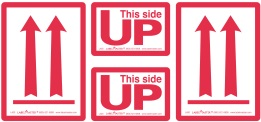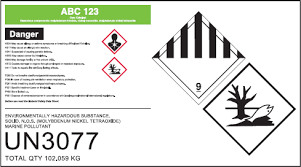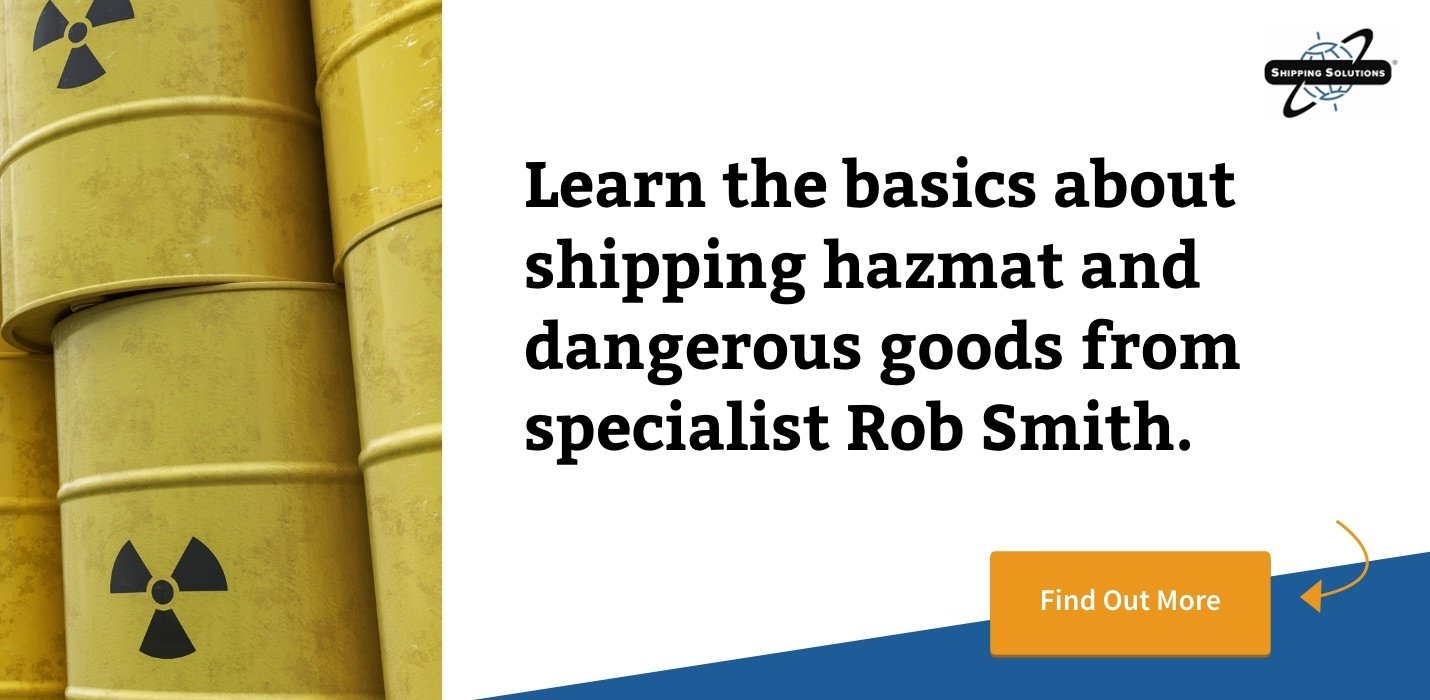The International Trade Blog Export Forms
Perplexed by Hazmat Shipping Regulations? We Answer 3 Common Questions
On: November 20, 2017 | By:  Robert Smith |
5 min. read
Robert Smith |
5 min. read
 When working with exporters across the United States providing dangerous goods onsite training, I’ve found many often have the same questions around the topic of hazmat shipping.
When working with exporters across the United States providing dangerous goods onsite training, I’ve found many often have the same questions around the topic of hazmat shipping.
In this article I share answers to three of the most frequently asked questions. I think they’ll resonate with you, too.
The first question looks at what circumstances require orientation arrows on hazmat packaging; the second question addresses when do you need to provide an emergency response telephone number for hazmat shipments? Finally, the third question takes on the thorny topic of when is the Marine Pollutant marking required for U.S. hazmat shipments?
When are orientation arrows required for hazmat shipping?

With a few minor exceptions, orientation arrows are only required on combination packages containing liquids. However, the requirement sometimes gets blurry because packaging providers usually preprint outer boxes with arrows on opposite sides.
Arrow style doesn’t leave much room for interpretation; it is spelled out in §172.312:
Legibly marked with package orientation markings, which are similar to the illustration shown in this paragraph, on two opposite vertical sides of the package with arrows pointing in the correct upright direction. The arrows must be either black or red on white or other suitable contrasting background and commensurate with the size of the package. Depicting a rectangular border around the arrows is optional.
For air shippers IATA DGR (Dangerous Goods Regulations) is more stringent because the shipper must use the same specifications as the ISO Standard 780:1997.
Download a free sample of the
Shipper's Declaration for Dangerous Goods
Again, there are exceptions for ground transport:
- A non-bulk package with inner packaging, which are cylinders.
- Except when offered or intended for transportation by aircraft, packages containing limited quantities of flammable liquids in inner packaging of 1 L or less prepared in accordance with §173.150 (b) or (c) of this subchapter.
- When offered or intended for transportation by aircraft, packages containing liquid hazardous materials in inner packaging of 120 mL (4 fluid oz.) or less when packed with sufficient absorption material between the inner and outer packaging to completely absorb the liquid contents.
- Liquids contained in manufactured articles (e.g., alcohol or mercury in thermometers) which are leak-tight in all orientations.
- A non-bulk package with hermetically sealed inner packaging not exceeding 500 mL each.
- Packages containing liquid infectious substances in primary receptacles not exceeding 50 mL (1.7 oz.).
- Class 7 radioactive material in Type A, IP–2, IP–3, Type B(U), or Type B(M) packages.
Do you need to provide an emergency response telephone for all hazmat shipments?
Providing an emergency response telephone number is a DOT requirement and applies for shipments to, from or transiting through the United States (CFR49 §172.604). The best person to address this question at your company is someone with knowledge of the hazardous material being shipped and who has information regarding emergency response and incident mitigation information for that material.
If you don’t have this expertise in-house, some shippers use a third-party service provider like Chemtrec or Chem-Tel. (I’m not endorsing these particular services).
Download a free sample of the
IMO Dangerous Goods Declaration
If you use a third-party service provider, make sure you include either the name of the contact person or contract number. The shipment must be clearly marked immediately following the hazmat description and indicates EMERGENCY CONTACT.
Emergency contact information is not required for the following materials:
- Battery powered equipment
- Battery powered vehicles
- Carbon dioxide, solid
- Castor beans
- Castor flakes
- Castor meal
- Castor pomace
- Consumer commodities
- Dry ice
- Engines, internal combustion
- Fish meal, stabilized
- Fish scraps, stablized
- Krill meal, PG III
- Refrigerating machines
- Vehicles flammable gas powered
- Vehicles, flammable liquid powered
- Wheelchairs, electric
When is Marine Pollutant marking required for hazmat shipping?

You received material packaged in non-bulk format from overseas by vessel. It is marked with a class 9, miscellaneous label and the Marine Pollutant mark (which is a dead tree and a dead fish). What are your options when reoffering this material domestically?
Recently, numerous European products have new safety data sheets where the material is classified as a class 9, environmentally hazardous substance ( UN3082 or UN3077) because it only meets the definition for a Marine Pollutant. In the U.S. we have an option to apply the exception found in CFR-49 §171.3 (c), “If no segment of the transportation is by vessel, no part of the HMR specific to Marine Pollutants apply to non-bulk packaging transported by road vehicle, rail car or aircraft.”
When reshipping by air, ≤ 5L or ≤ 5kg of UN 3082 or UN 3077, (according to IATA DGR Special Provision A197) provided you use good quality packaging that is compatible with the material being shipped, there is also complete relief from any of the other provisions of the DGR.
The main point here is about reducing extra costs. Why ship something classified as dangerous goods and pay a premium when you can ship it non-hazardous.
This only applies to marine pollutants that do not meet the definition of any other hazard class. For example, cyanide is poisonous to fish and humans, therefore the Marine Pollutants mark—along with the Div. 6.1 toxic (skull & crossbones) label—are required. The package must be shipped domestically as a toxic material. Note, the Marine Pollutant mark only applies if the package is shipped by vessel.
If you have specific questions about dangerous goods shipping, send me an email at rsmith@cargopak.com.
This article was first published in July 2015 and has been updated to include current information, links and formatting.

About the Author: Robert Smith
Robert M. Smith is CEO and senior instructor of CARGOpak Corp. based in Raleigh, North Carolina. Robert is a dangerous goods and hazmat specialist with more than 30 years experience as a consultant, UN POP designer, and dangerous goods and hazmat training facilitator.
His company consults with clients on various hazmat compliance issues as well as develops and conducts training on dangerous goods/hazmat transport both domestically and internationally through a variety of training formats including web-based, on-site, and public classes. Robert has assisted a broad range of clients in dangerous goods/hazmat transport compliance through the United States, Canada and abroad.


